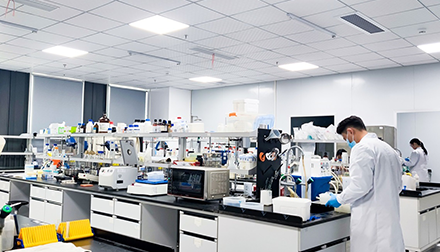CPHI China 2025, Demonstrating Synthetic Biology Innovation, Looking Ahead to Global Layout
Green Bio-Tech, Healthier and better life

There are over 2000 existing enzyme libraries
Compared with non biological catalysts, it has extremely high catalytic efficiency, which is more than 100 times that of general catalysts.

Accumulated applications for over 190 domestic and foreign invention patents

A ton level fermentation production platform that meets the enzyme requirements for large-scale production of existing raw materials

Super strong patent barriers for 24 NMN raw material inventions

More than 38 cutting-edge research and development teams in enzyme catalysis

About Bontac
Founded in July 2012, Bontac Bio-Engineering (Shenzhen) Co., Ltd. (hereafter referred to as BONTAC) is a high-tech enterprise integrating R&D, production and sales, with enzyme catalysis as the core biosynthetic technology. There are six major series of products in BONTAC, involving coenzymes, natural products, sugar substitutes, cosmetics, dietary supplements and medical intermediates.
As the leader of the global NMN industry, BONTAC has the first whole-enzyme catalysis technology in China. Our coenzyme products are widely used in fields such as nutrition and health, biomedicine, medical beauty, daily chemical and green agriculture.

square meters
Total production area

ton
Annual production capacity of coenzymes

enterprises
Stable supply for global enterprises

platforms
Research collaboration platforms
As the leader of the global NMN industry, BONTAC has the first whole-enzyme catalysis technology in China.
Our coenzyme products are widely used in health industry, medical & beauty, green agriculture, biomedicine and other fields.

Over 190 patents applied
24 NMN patents
The 4th generation full enzymatic production
High purity, superior quality and remarkable stability
Efficient large-scale manufacturing

Backed by the stringent oversight of the globally recognized food safety management system FSSC 22000, as well as the U.S. Food and Drug Administration's (FDA) safety assessment standard SELF GRAS, BONTAC meticulously manages the quality of its products from the earliest stages of production. This guarantees our customers get raw materials that are healthy, safe, and reliable

Initial drafter of the group standard for NMN
High-tech enterprise at national level in China
KPMG China's 2nd top 50 Biotech Innovation Enterprises
2023 Deloitte China Life Sciences & Healthcare Rising Star
The only provincial coenzyme engineering technology research center in Guangdong